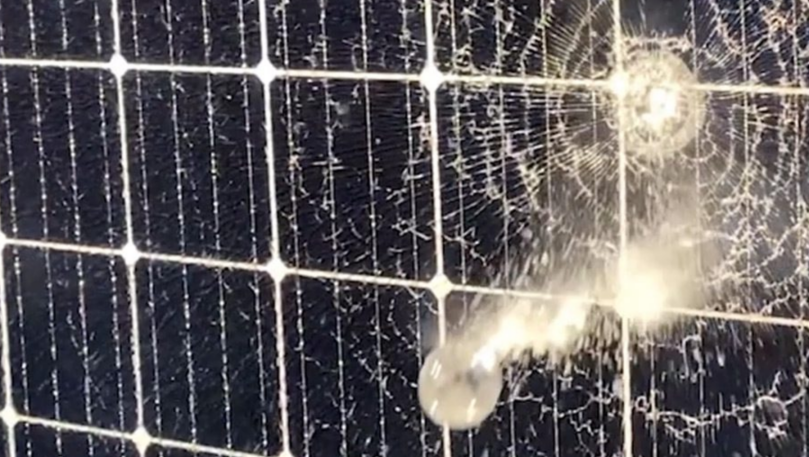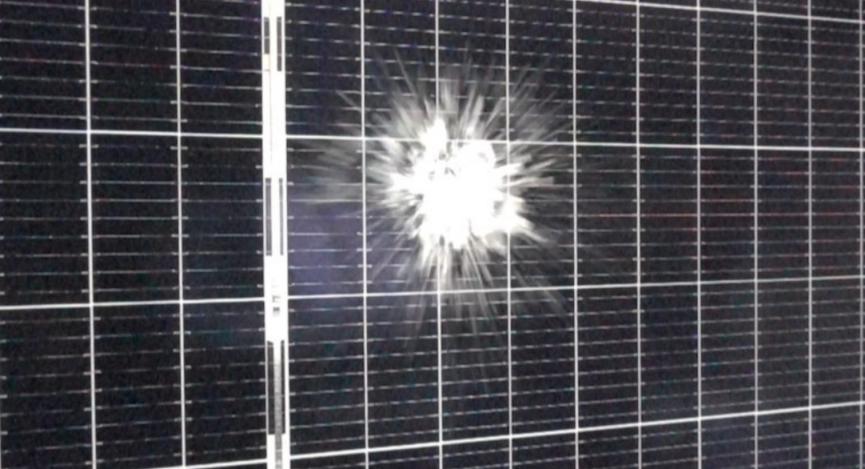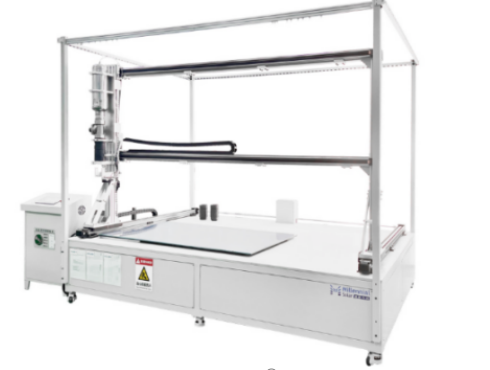
Quantum Efficiency Tester
PL/EL Integrated System
PV-Reflectumeter
3D Confocal Microscope
In-Line Four Point Probe Tester
Four Point Probe Tester
In-Line Thin Film Thickness Tester
Raman Spectrometer
FTIR Spectrometer
Spectrophotometer
Automatic Spectroscopic Ellipsometer
Contact Resistance Tester
Ultra depth of field 3D microscope
Auto Visual Tester
VMM PV Vision Measuring Machine
Solar Cell Horizontal Tensile Tester
Steady State Solar Simulator for Solar Cell
Solar Cell UV Aging Test Chamber
Solar Cell Comprehensive Tensile Tester
Visual Inspection Tester
Wet Leakage Current Tester
PV Module EL Tester
PV Module UV Preconditioning Chamber
Steady State Solar Simulator for PV Module
Current Continuous Monitor
Potential Induced Degradation Test
Bypass Diode Tester
LeTID Test System
Reverse Current Overload Tester
Impulse Voltage Tester
Hipot Insulation Tester
Ground Continuity Tester
Hipot Insulation Ground Tester
Damp Heat Test Chamber
Humidity Freeze Test
Thermal Cycle Test Chamber
Dynamic Mechanical Load Tester
Static Mechanical Load Tester
Hail Impact Tester
Robustness of Termination Tester
Module Breakage Tester
Cut Susceptibility Tester
Peel Shear Strength Tester
Universal Testing Machine (Single-arm)
Universal Testing Machine (Double-arm)
Glass Transmittance Tester
Acetic Acid Test Chamber
EVA Degree of Crosslinking Test System
Junction Box Comprehensive Tester
Drop ball tester
Semi-automatic scanning four-probe tester
Stylus Profilometer
Maximum Power Point Tracker
Perovskite Glass Transmittance Tester
Perovskite P1 Laser Scribing Multifunctional Testing Machine
Perovskite Online PL Tester
Perovskite Online Sheet Resistance Tester
Online Perovskite Film Thickness Tester
Perovskite Process Inspection Workstation
Portable IV Curve Tester
Portable EL Tester
Portable Thermal Imaging Tester
Solar Module Multi-Channel Testing System
PV Inverter Power Quality Tester
Drone EL Tester
IV Tester
IVEL Cell Sorting Machine
Hail Impact Tester - Ensuring the Durability of Renewable Energy Sources
Date : 2023-12-15Views : 150
With the widespread application of solar power generation, the quality and reliability of photovoltaic modules have become the focus of the industry. In actual operation, photovoltaic modules may face various challenges from the natural environment, including the impact of hail. In order to ensure the reliability and durability of photovoltaic modules under hail weather conditions, the International Electrotechnical Commission (IEC) formulated the IEC 61215 standard, which requires a hail impact test. The Hail Impact Tester developed by Millennial Soalr plays an important role as a key equipment for evaluating the impact resistance of photovoltaic modules.

![]()
How Hail Impact Tester works
The Hail Impact Tester is a device specifically designed to simulate hail impacts. Its working principle is based on high-speed impact experiment technology, by launching hail-simulating samples to impact the photovoltaic module to be tested at certain speed and energy. The testing machine simulates the impact effects under different hail weather conditions by controlling parameters such as impact speed and impact energy. Hail Impact Tester plays an important quality control role in the photovoltaic module production process. Through the hail impact test, products with unqualified quality can be screened out to ensure the reliability and safety of factory products.

![]()
Steps for hail impact test of photovoltaic modules
1. Preparation
2. Install photovoltaic modules: Install the photovoltaic modules to be tested and ensure that their position and fixation method meet the test requirements.
3. Set test parameters: set parameters such as impact speed, angle and energy.
4. Run the experiment:
a. Launch hail samples: Start the launch system and launch simulated hail samples.
b. Data collection: Record the data during the test through data collection equipment for subsequent analysis and evaluation.
5. Data analysis:
a. Analysis of damage: Evaluate the damage of photovoltaic modules under hail impact, including appearance deformation, cracking, changes in electrical properties, etc.
b. Result evaluation: Compare the test results with the IEC 61215 standard to evaluate the impact resistance and durability of the photovoltaic modules.
6. Conclusion and report
It should be noted that the hail impact test of photovoltaic modules should be conducted in a professional laboratory to ensure the safety and accuracy of the test process. At the same time, relevant safety operating procedures should be followed during the test to ensure the safety of personnel and equipment.
![]()
Hail Impact Tester
Hail Impact Tester is equipped with a variety of clamps, which can be adapted to photovoltaic modules of different structures; the speed of the ice puck can be monitored with a speedometer to ensure that the speed is accurate and intuitive; the ice puck is launched by compressed air, and the compressed air pressure is adjustable;
The ice ball launch point can be positioned by infrared rays to ensure accurate results; a waste ice ball treatment tank is designed to protect personnel safety.

E-mail: market@millennialsolar.cn
By conducting hail impact tests, the reliability of photovoltaic modules under extreme weather conditions can be effectively evaluated and provide scientific basis for the design and operation of photovoltaic systems. Testing in accordance with the IEC 61215 standard can ensure that the quality and reliability of photovoltaic modules meet international standards. The Hail Impact Tester from Millennial Solar plays an important role in evaluating the impact resistance and durability of photovoltaic modules. In the future, with the continuous development of technology, Hail Impact Tester will be further improved to provide more reliable support for the sustainable development of the photovoltaic industry.

































































